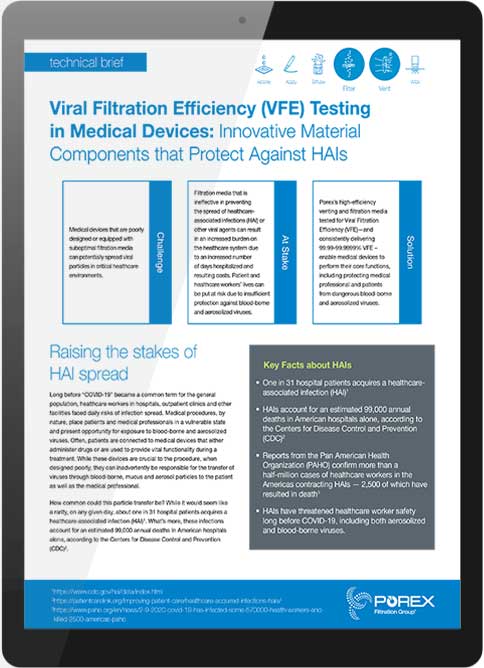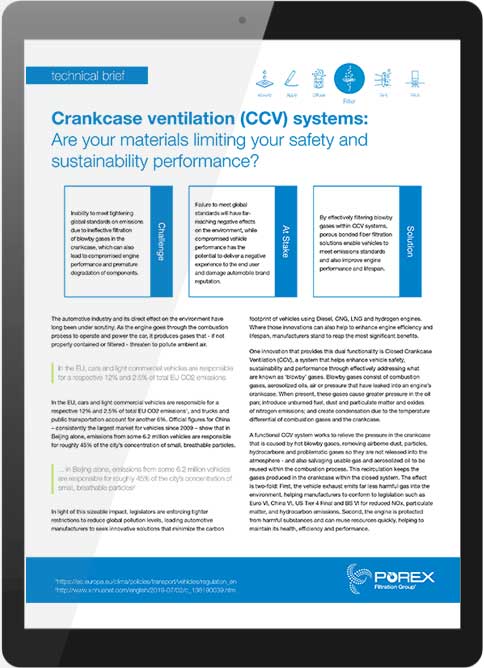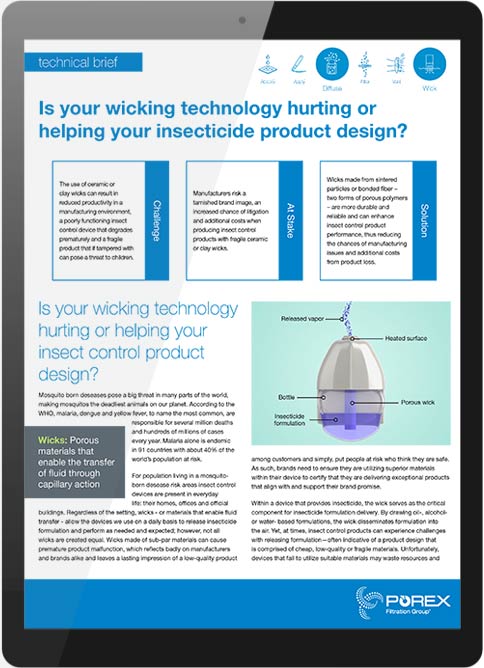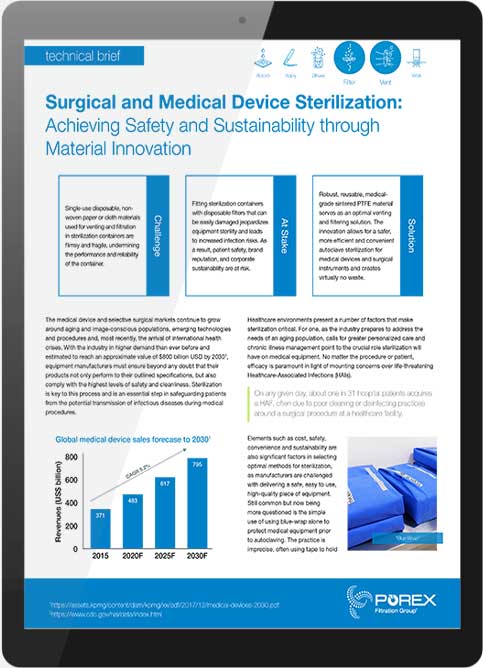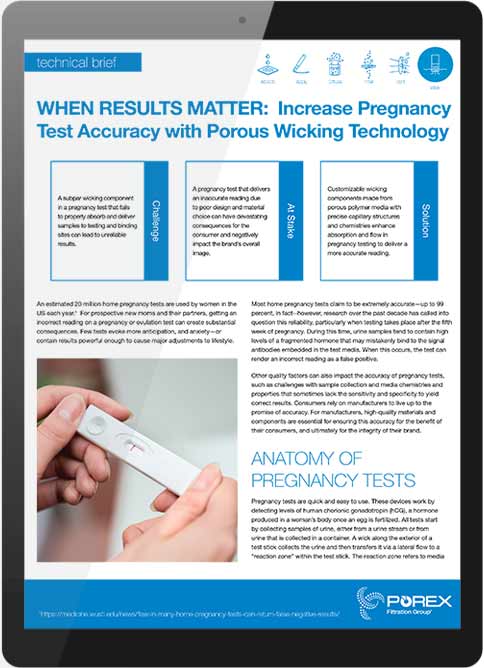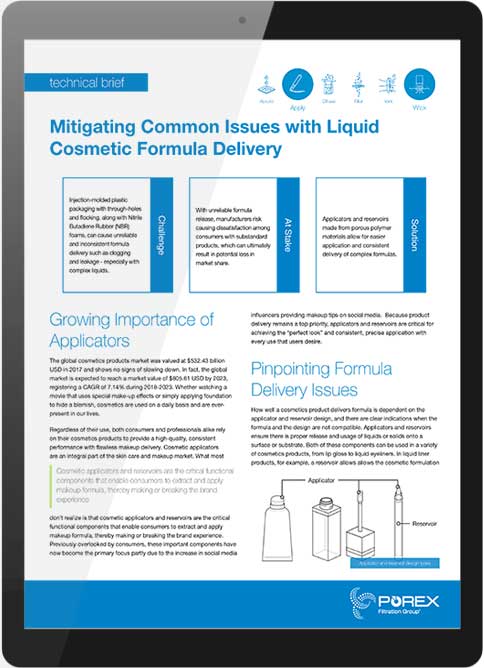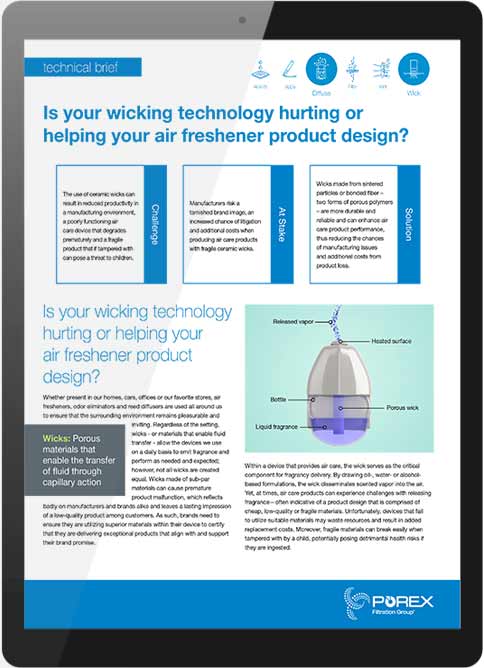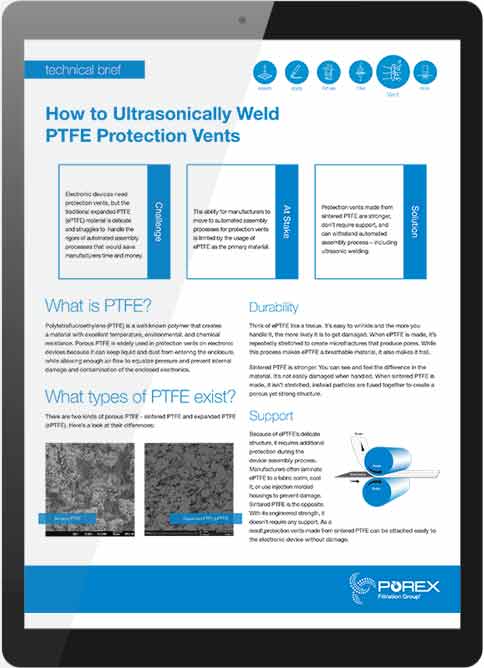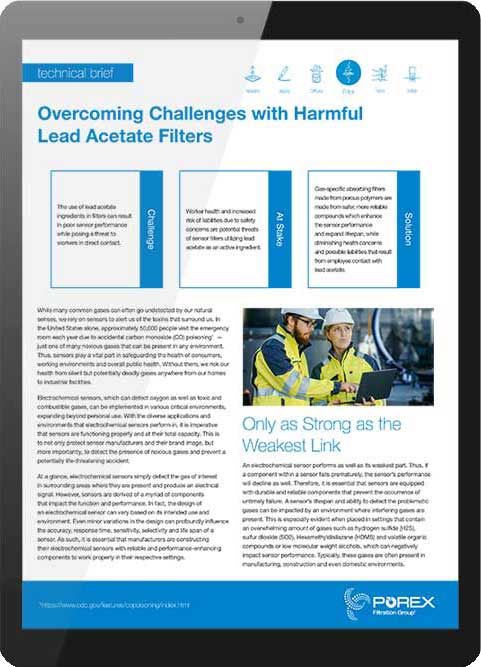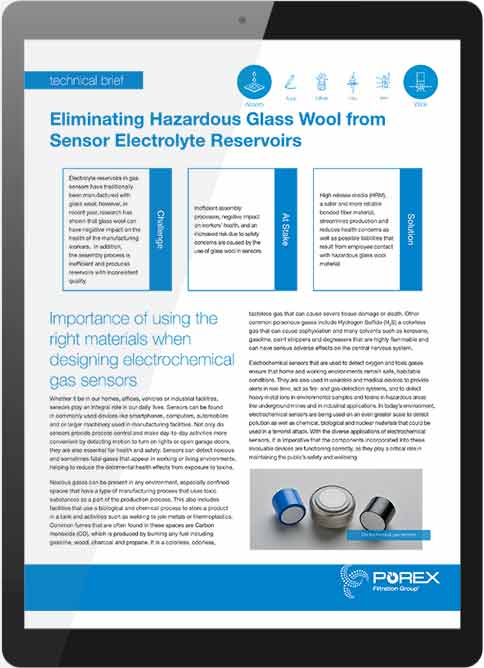Porous polymers are the unknown science behind many of the products we use every day, providing key functionalities to products as diverse as coloring markers and diagnostic tests. In this Tech Brief series, learn about the different types and functions of porous polymers and how they can be applied in just about any industry.
For almost 60 years, Porex has been partnering with our customers to deliver engineering and design innovations in porous polymers that turn their product ideas into reality. Our Porex material science experts prepared this Technical Brief series on how porous polymers can improve your product’s performance and drive market differentiation in your industry.
Perfect for design and manufacturing engineers who either have a potential product concept or need to fix a problem with an existing product, significantly contributed to this Tech Brief series to explores the science behind porous polymers and how to select the right type of material for your application.
Library of Tech Briefs
MEDICAL DEVICES
Viral filtration efficiency (VFE) testing in medical devices: Innovative material components that protect against HAIs
Nearly one in 31 hospital patients acquires a healthcare-associated infection (HAI)—and these infections lead to an estimated 99,000 annual deaths in American hospitals alone, according to the Centers for Disease Control and Prevention (CDC).
Healthcare workers face similar—if not greater—threats due to frequent exposure to bacterial and viral pathogens. These risks have been magnified during the COVID-19 pandemic, in which those receiving or providing healthcare procedures are potentially exposed to blood-borne and aerosolized particles containing the virus. To help protect against these threats and promote a safe healthcare environment, it is imperative for medical device manufacturers to utilize high-efficiency materials that serve as consistent, reliable barriers against infectious viral particle spread. In this tech brief, learn how new viral filtration efficiency (VFE) testing measures verify material performance and the ways porous polymer technologies can offer a solution in critical device design.
AUTOMOTIVE & AEROSPACE
Crankcase ventilation (CCV) systems: Are your materials limiting your safety and sustainability performance?
The automotive industry is facing stricter regulations to clean up global pollution levels by reducing vehicle emissions. In fact, new emission performance standards are requiring auto manufacturers in China and the EU to use more advanced filtering and venting systems for particulate matters and for trapping exhaust gases to minimize the carbon footprint of vehicles using diesel, CNG, LGN and hydrogen engines.
In this tech brief you will learn how high-performing porous polymer media used in closed crankcase ventilation (CCV) system filtration can help manage critical fluids and gases, ultimately enhancing vehicle performance, driver safety and sustainability metrics—and as a result, manufacturer reputation.
AIR CARE
Is your wicking technology hurting or helping your insecticide product design?
The fragrance delivery of an air care device such as an insecticide or pest control device can be impacted by the material of the wick, which is designed to disseminate liquid into the air. Poor design and material choice can result in product malfunction that contributes to additional resource waste and extra replacement costs.
In this tech brief, discover how pest control products utilizing wicks made from porous polymers offer greater functionality that enable better emanation rates for a controlled and consistent delivery of insecticide as well as provide a safer, more sustainable and cost-effective solution.
MEDICAL DEVICES
Surgical and medical device sterilization: Achieving safety and sustainability through material innovation
In this Tech Brief, engineers working on sterilization devices can learn how the materials used to vent and filter within the sterilization container have a critical impact on the performance and reliability of the container. Disposable filters that are found in many sterilization containers can be easily damaged or inserted incorrectly, which jeopardizes equipment sterility and increases infection risks.
Learn more about the innovative and reusable medical-grade materials that can be designed into sterilization containers, and the science behind how they achieve this increased performance
IN-VITRO DIAGNOSTICS
When results matter: Increase pregnancy test accuracy with porous wicking technology
For expecting parents, home pregnancy tests are counted on to deliver fast and accurate results, up to 99 percent in fact. However, its reliability can be put to the test if the device is equipped with a subpar wicking component. Failure to properly absorb and deliver samples to a reaction zone can render an incorrect reading that can create unwanted stress and anguish for a new mom and her partner.
In this tech brief, learn how porous polymer media with precise capillary structures and chemistries can be optimized to transfer and deliver samples quickly while providing more accurate results.
PERSONAL CARE & BEAUTY
Mitigating common issues with liquid cosmetic formula delivery
Cosmetic applicators are an integral part of the skin care and makeup market, and both consumers and professionals alike rely on their cosmetics products to provide a high-quality, consistent performance with flawless makeup delivery. What most don’t realize is how well a cosmetics product delivers formula is dependent on the applicator and reservoir design, and there are clear indications when the formula and the design are not compatible.
In this tech brief, discover how applicators and reservoirs made from porous polymer materials allow for easier application and better formula delivery, providing a reliable product that is also sustainable and contributes to a desired look.
AIR CARE
Is your wicking technology hurting or helping your air freshener product design?
The fragrance delivery of an air care device such as an odor eliminator or air freshener can be impacted by the material of the wick, which is designed to disseminate liquid into the air. Poor design and material choice can result in product malfunction that contributes to additional resource waste and extra replacement costs.
In this tech brief, discover how air care products utilizing wicks made from porous polymers offer greater functionality that enable better emanation rates for a controlled and consistent delivery as well as provide a safer, more sustainable and cost-effective solution.
ELECTRONICS
How to ultrasonically weld PTFE protection vents
Electronic devices across industries such as healthcare, consumer goods, and automotive need protection vents to protect the electronics inside; however, the expanded PTFE (ePTFE) material that many vents are constructed of is delicate and can’t handle the rigors of automated assembly processes such as ultrasonic welding that would save manufacturers time and money.
In this tech brief, learn about protection vents made from sintered PTFE, the stronger option that can withstand any automated assembly process to make the manufacturing process more efficient.
SENSORS
Overcoming challenges with harmful lead acetate filters
The lifespan of an electrochemical gas sensor and its ability to detect problematic gases can be negatively impacted by an environment where interfering gases – such as H2S, SO2, HDMS and volatile organic compounds – are present. Gas absorption filters act as a gatekeeper between the interfering gases and the target gases of the sensor, enabling the target gas to reach the electrode and be identified.
In this tech brief, learn how porous polymers can be used in absorption filters instead of lead acetate to make them safer for the environment and workers – and to enhance the sensor’s performance and lifespan.
SENSORS
Eliminating hazardous glass wool from sensor electrolyte reservoirs
Electrolyte reservoirs in electrochemical gas sensors have traditionally been manufactured with glass wool; however, in recent years, research has shown that glass wool can be hazardous to the health of the manufacturing workers in charge of assembling the sensors. In addition, the glass wool assembly process is highly manual, leading to inefficiency and inconsistency in the final sensor.
In this tech brief, learn how not only to remove glass wool from your sensor assembly entirely but also to increase the efficiency and consistency of the reservoir assembly process.


